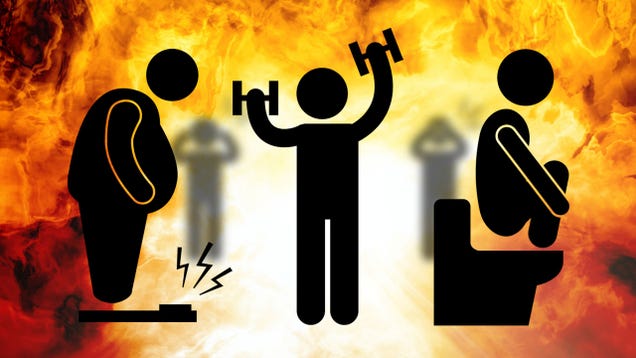First up, this is from Girls Gone Strong (don't let the name of the site fool you, these women know their stuff - and this is problem I see more in men than in women, so pay attention):
My Butt Is Doing What? Squats and Butt Wink
(Note from GGS: Hey GGS Community! We have a real treat for you today with another awesome installment of Ask Ann, our monthly column with Physical Therapist and Athletic Trainer, Ann Wendel. Enjoy!)
“Hi Ann! I try to squat to full depth, but I can’t seem to do it comfortably or with good form. I keep hearing the term “butt wink.” What is it and what causes it?”
Hi there! Thank so much for submitting your question. It’s a great question, and ties in nicely with last month’s column. Let’s start by defining the term “butt wink.”
Butt wink is a common term for losing proper spinal positioning when squatting to depth (in gym terms, “in the hole” or “ass to grass”). Instead of maintaining a neutral or slightly extended lumbar spine, the lifter experiences posterior pelvic tilt and lumbar flexion at the lowest point of their squat. This makes the butt “wink” or tuck under (the photo below left shows proper form, photo on the right shows butt wink).
Image Source: here
3 Keys to Improving Power
May 9, 2014 | Mike Robertson

As an athlete, power reigns supreme.
Sure maximal speed is important, and being brutally strong can help, but if you want to be at your best it behooves you to improve power.
Unfortunately, I think most athletes go about this entirely wrong.
First and foremost, they spend all their time focusing on force production vs. force absorption.
Second, athletes and coaches alike don’t follow a basic hierarchy when it comes to training power. Just like you shouldn’t train force production before force absorption, you may not need to train power at all initially to see improvements in power production!
Here are three keys you should focus on if your goal is to improve power.
* * * * *
From Lifehacker:
10 Health Myths That Just Won't Die, Debunked by Science
By Adam Dachis
Everything makes you fat! Gluten-free food is the key to eternal youth! You need to poop ten times a day or you’ll die! You’ll find tons of equally ridiculous health claims around the internet, and you’ll actually believe some of them. Today we’re taking a look at 10 common myths and uncovering the truth.
While we’ve learned a lot about health issues here at Lifehacker over the years, we can’t claim expertise on any particular subject. To help us get to the root of these myths, we solicited the help of three experts: Dr. Carly Stewart (medical expert at Money Crashers), Andy Bellatti (Las Vegas-based registered dietitian), and Dr. Spencer Nadolsky (medical editor at Examine.com). They all offer a unique perspective on each myth but mostly came to the same conclusions: we have a lot of silly misinformation out there about our health.
* * * * *
From T-Nation:From 0 to 100: Know Your Percentages!
by Christian Thibaudeau* * * * *
05/13/14
Here's what you need to know...
While training percentages can vary depending on how you're feeling on a given day, they can still be extremely useful. After all, if you know the specific training effect of various levels of loading, you can select the weight that's appropriate to your goals. So here's something I've rarely seen presented: a list of percentages that explains what each type of training load can provide and what kind of body they will give you.
- Knowing the effects of each training zone will allow you to make the best choices when it comes to designing your own training plans.
- Each training percentage, from zero to 100% of your 1RM, has a distinct effect on speed, power, muscle hardness, muscle density, and hypertrophy.
- Percentages can't always be followed to the "T". Some days 80% will feel like 90%, but these general guidelines will help you plan your training to get the results you're after.
Last up this week is a video talk from Team3DMJ about time under tension (TUT), which was once all the rage in training for size or strength.
Peeling Back a Layer Episode 5: "Is Time Under Tension Important?"
Published on May 14, 2014
Peeling back a layer addresses commonly misunderstood topics that we think we have a solid grasp of, but that we are actually missing a critical understanding of.
This episode asks the question, "Is Time Under Tension Important?"
See the referenced scientific studies here (I recommend reading the full texts):
- Schoenfeld - http://www.ncbi.nlm.nih.gov/pubmed/24...
- Headley - http://www.ncbi.nlm.nih.gov/pubmed/20...
- Campos - http://www.ncbi.nlm.nih.gov/pubmed/12...



No comments:
Post a Comment